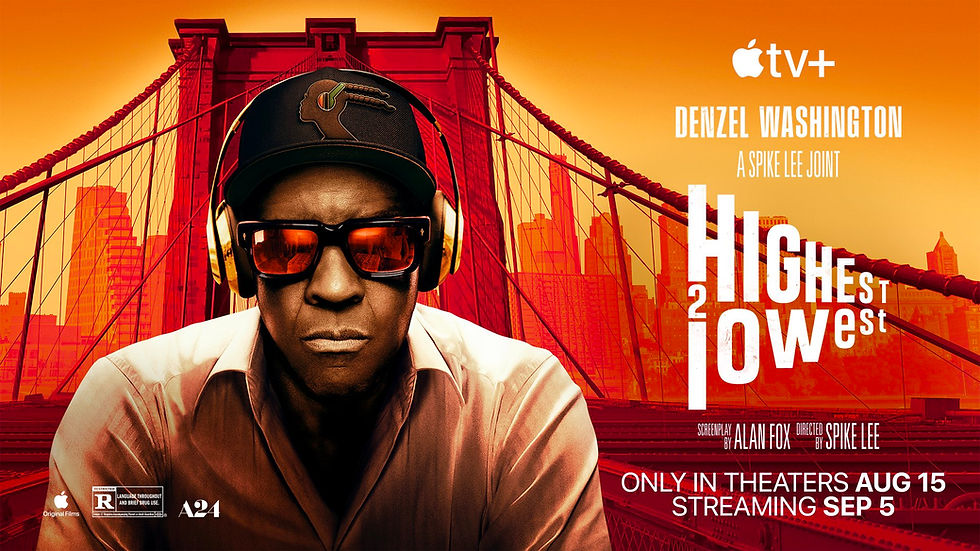Concrete Cowboy Review
- Louis Saddler
- Apr 8, 2021
- 3 min read

If I had not grown up in Mississippi, I feel confident in saying my only exposure to Black cowboys would have been Blazing Saddles, Posse, and Morgan Freeman in Unforgiven. If you’re keeping score, those references are at least 28 years old, which is shameful because there is a rich history of Black cowboys and horse-riding in the Black community that has largely gone unnoticed.
Concrete Cowboy, starring Idris Elba and Stranger Things star Caleb McLaughlin, is a step towards correcting the issue. Using Philadelphia’s Fletcher Street Urban Riding Club as the backdrop, Concrete Cowboy is a story about a teen sent from Detroit to stay with his father, the club’s leader, to learn the urban riding culture in hopes of keeping him away from street life.
Black cowboys and positive images of Black fathers in their child(ren)’s life are hard to find in film. Can Concrete Cowboy successfully shed much-needed light on both stories?
Elba may be the reason you’re interested in Concrete Cowboy, but it’s McLaughlin who’s the star of the film and the reason you invest in it. From the moment he hits the screen, it’s clear we are not about to watch Lucas from Stranger Things hang out with horses.
McLaughlin is more than convincing as a troubled teen – he transforms into Cole physically and emotionally. Brooding and malevolent body language replaces the bright-eyed, youthful mannerisms of his more adolescent roles. He’s almost unrecognizable.
From an emotional standpoint, McLaughlin channels anger and resentment with an authenticity that shows he has remarkable range for an actor so young. It’s impressive to the point where he steals scenes from Elba when they clash. The ability to pull that off signals McLaughlin’s star is about to rise a lot more.
Elba delivers his usual high-quality work as Harp, Cole’s father, despite being more of a supporting player. The strength of his performance is the chemistry he establishes and maintains with McLaughlin throughout the film. He carefully picks his spots as if he’s avoiding overshadowing McLaughlin but asserts himself when necessary. It plays out like a real-life father-son relationship and the film is better for it.
In his feature film debut as a writer and director, Ricky Staub shows as much potential as his film’s young star. The script, which is more about Cole and Harp than the riding club, doesn’t break any new ground as it hits every coming-of-age trope we’ve seen time and time again, like the “fish out of water” plot. Think Boyz N the Hood without Tre punching air to get Brandi in the sheets and swapping Doughboy’s 64 for Mr. Ed.
Additionally, the third act is as predictable as the sun rising in the east and setting in the west and outlandishly unrealistic. However, he still keeps things by carefully taking us through the stages of Cole’s growth and embracing the community and the father-son dynamic that many films of today either lack or show in a negative light.
The best part of Staub’s debut is directing. He does a good job balancing Cole and Harp's stories while informing the audience about the Fletcher Street Urban Riding Club's history and connections between Black Americans and horses. Staub, with cinematographer Minka Farthing-Kohl, also impressed with the quality of the shots used in the film’s horse-riding scenes and scenes unrelated to horses, such as the introduction to Cole and his later “activities” in the streets of Philadelphia.
Concrete Cowboy is a film that uses a little-known story to tell a universal truth – the importance of fathers/father figures and community in the lives of our youth. It isn’t a heavy-handed drama, but it does a fine job making its point without making neither the kid, the parent, nor community members into a villain. You can easily guess how everything will go as you watch the film, but the McLaughlin-Elba combo and some surprisingly good cinematography make Concrete Cowboy well worth the time you invest in viewing it.



Comments